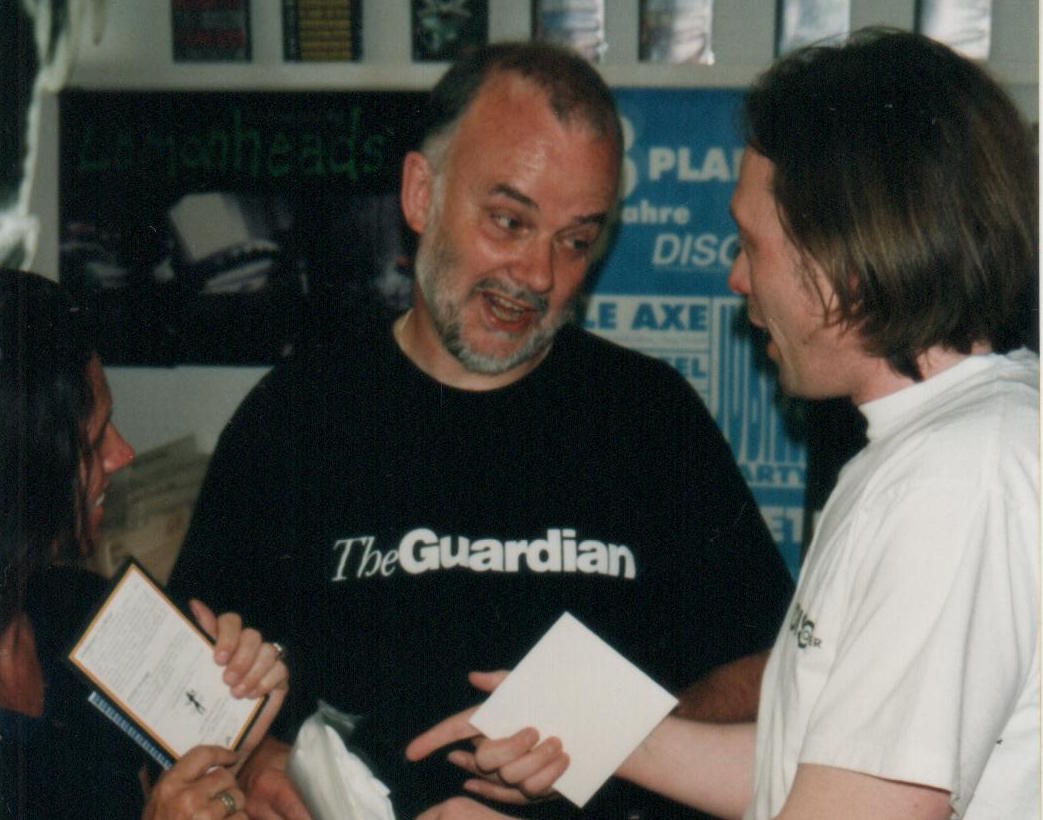If you were an English boy growing up in the 1960s, and your dad met the Queen mum, you’d come away with some pretty heavy duty bragging rights.
What if your dad didn’t just meet her, but commanded her attention for a full three minutes… an event you witnessed on the telly, along with 21.2 million others?
That’s what happened to young Declan Patrick McManus, or Elvis Costello as he’s more commonly known these days.
Unfortunately, his musician father Ross’s calypso-inflected, Trini Lopez-inspired rendition of Pete Seeger’s “If I Had a Hammer” at the Queen’s annual Royal Variety Performance was overshadowed by another act in the evening’s line up: The Beatles.
This was the performance where John Lennon famously solicited the audience’s participation on “Twist and Shout”:
For our last number, I’d like to ask your help. The people in the cheaper seats, clap your hands. And the rest of you, if you’d just rattle your jewelry.
https://vimeo.com/151903948?embedded=true&source=video_title&owner=47853706
So, Ross McManus played for the Queen Mum (and Princess Margaret) and all little Declan got was a great anecdote for his 2016 memoir Unfaithful Music & Disappearing Ink and a thoughtful souvenir:
Eventually I couldn’t pretend that I really cared whether he’d… shaken hands with the Queen Mum. I blurted out:
“Did you actually meet The Beatles?”
It had obviously been a long night or an early morning, as my Dad wasn’t that talkative. He mumbled something about them being very nice lads. Then he reached into a jacket slung over the back of his chair and pulled out a sheet of thin airmail paper and handed it to me.
I unfolded it, and there were the signatures of all four of The Beatles on one page. I’d seen reproductions of their signatures in enough magazines and fan club literature to know that these appeared to be the real thing.
The ink seemed barely dry.
What I did next will bring tears to the eyes of those who make a fetish of such objects, but I had only a small autograph book and the paper was too large to be mounted in it.
I carefully, if not so very carefully, cut around each of the signatures, lopping off the e of the “The” in “The Beatles” and pasting the four irregular scraps of paper into my album.
McManus the Elder took another crack at “If I Had a Hammer” when he and other members of the Joe Loss Orchestra were invited to reprise their royal performance in the 1965 short The Mood Man, excerpted at the top of this page.
Clearly, the acorn didn’t fall far from this tree!
Father and son seem more like twins here:
the horn-rimmed specs…
The vibrato…
That vintage style!
(Speaking of which, Costello confides that his father was obliged to wear long johns under his off-white suit “after the television director claimed that his flesh could be detected through the thin material … under the television lights, which would be bound to scandalize the royal party.”)
The two also shared a willingness to experiment with assumed names. Ross McManus found success in Australia with a cover of The Beatles’ “The Long and Winding Road” as “Day Costello” — surname compliments of his grandmother’s maiden name. (Other handles include “Hal Prince” and “Frank Bacon and the Baconeers.”)
Elvis Costello spent enough time in his old man’s orbit to recognize the disembodied hands playing the conga drums in the opening shot shot of McManus’s “If I Had a Hammer“ — Bill Brown’s, taking a bit of a busman’s holiday from the baritone saxophone.
And he acknowledges his own persona’s debt to his dad, citing the section where he “lip-synchs the hell out of the number, miming ‘hammer of justice’ for all it’s worth”:
The close-ups that come on the repeated line, “It’s a song about love between my brothers and my sisters” are eerie to behold for the similarity of our facial expression at about this age, and especially when singing particular words.
Where my Dad holds the advantage over me is in his dance moves.
Those are steps that I am yet to master.
Costello also notes that his father gave him a bit of a professional leg up in 1973, when he got him hired for backing vocals on a musical ad for R. Whites Lemonade:
For some reason, the producer asked my Dad to deliver the song in a mock Elvis Presley voice, while for the background part, they wanted “R. Whites” punched out so that it sounded like the “All right” on a Swinging Blue Jeans record. I suppose the advertising people thought the kids would dig it… given that my Dad and I could easily approximate a suitably nasal Mersey sound, we cut the parts in a couple of takes. It wasn’t exactly the big time, but there was still a thrill to hearing your voice come back off the tape, even if you were singing something farcical.
The ad made a lasting impression. If there’s a club for British people who watched TV in the 70’s “secret lemonade drinker” may well be the password. (Costello, understandably, was not pleased when a tabloid’s brass decided it made a fitting headline for his talented, well-known father’s obituary: “Secret Lemonade Drinker Dies.”)
The first Secret Lemonade Drinker ad’s popularity justified various sequels over the years, particularly when fans got hip to the 19-year-old Costello’s involvement.
He was, in fact, more involved than many would realize.
As he recalls in his memoir, the original recording session turned into an impromptu casting session for an alternate, albeit far harder to find online, take:
The ad men took a look around the studio and decided to cast this second version of the commercial from the musicians on the session. The drummer and hippie guitar player certainly looked the part, but the pianist and bass player were older more conservatively dressed and didn’t really fit the bill. Given our then more fashionable hairstyles, my Dad and I were recruited to mime the keyboard and bass parts, and we spent the day taking and retaking the thirty second clip, lip-synching the “R. Whites / All right” background part with as much animation as we could manage by take forty six.
Behold!
Costello’s relationship with his father — also the only son of a musician — is a prime topic of his 688-page memoir.
It’s not only easy, but worthwhile, to truffle up online evidence of Ross’s recording career. There’s even a rare, early 80s duet between father and son…
For some intel on Costello’s mother Lilian’s influence, read his moving tribute from earlier this year, written shortly after her death.
h/t to reader Greg Kotis.
Related Content:
See the First Ever Video of Elvis Costello Performing, Summer 1974
The Stunt That Got Elvis Costello Banned From Saturday Night Live (1977)
Elvis Costello’s List of 500 Albums That Will Improve Your Life
Ayun Halliday is the Chief Primaologist of the East Village Inky zine and author, most recently, of Creative, Not Famous: The Small Potato Manifesto. Follow her @AyunHalliday.




